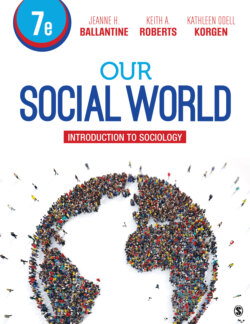Читать книгу Our Social World - Kathleen Odell Korgen - Страница 144
На сайте Литреса книга снята с продажи.
Key Points
ОглавлениеSociety refers to an organized and interdependent group of individuals who live together in a specific geographic area, interact with each other more than with outsiders, cooperate to attain goals, and share a common culture over time. Each society has a culture, the way of life shared by a group of people, including ideas and “things” that are passed on from one generation to the next; the culture has both material and nonmaterial components.
Societies evolve from very simple to more complex, from the simple hunter-gatherer society to the information societies of the postindustrial world.
The study of culture requires that we try to avoid ethnocentrism (judging other cultures by the standards of our own culture). Instead, we should use the view of cultural relativism, so that we can understand culture from the standpoint of those inside it.
Just as social units exist at various levels of our social world, from small groups to global systems, cultures exist within different levels of the social system—microcultures, subcultures, national cultures, and global cultures. Some social units at the micro or meso level stand in opposition to the dominant national culture, and they are called countercultures.
Various theories offer different lenses for understanding culture. Whereas symbolic interaction illuminates the way humans bring meaning to events (thus generating culture), functionalist and conflict theories examine cultural harmony and conflict between cultures, respectively.
The metaphor of hardware (society’s structure) and software (culture) describes the interdependent relationship of society and culture, and as with computers, there must be some compatibility between the structure of a society and the culture. If there is none, either the cultural elements that are transported into another society will be rejected or the culture will be “reformatted” to fit the society.
